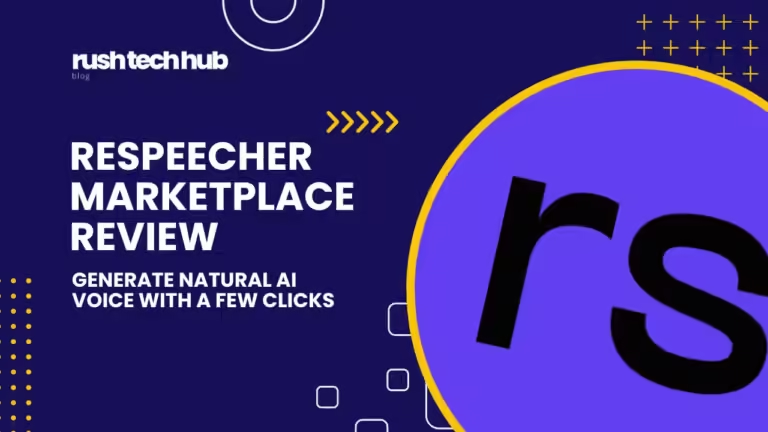1. Know Your Audience

Before crafting a stellar outline or a slide deck, understand your audience. Find out who is on the receiving end. This will help you in building a roadmap for your presentation. It will assist you in targeting a specific group rather than a general one. Remember, you are giving a presentation for them, not for you.
Do a professional background check on the audience. Understand their technical jargon, characteristics, and priorities. This will help you put together a presentation that directly speaks to them.
2. Focus on Clarity and Impact

Clarity is a binary skill during the presentation. On the one hand, you have to be clear about the purpose of your presentation. Explain the core purpose of why you are giving the presentation and what they should expect throughout the duration.
On the other hand, you need to be concise and clear about delivering the presentation. Your slide decks should reflect clarity without stuffing so many words. The audience is supposed to be listening to you, not watching a PowerPoint presentation. Emphasize the words and statements that you wish to create an impact.
3. Engaging opening

Do not rush to the opening statement of the presentation. Understand your audience first, and delve into the silence. This will set the tone of your presentation. Consider adding a hook to your opening. It could be humor, a surprising statistic, or a thoughtful question.
4. Remember the 10/20/30 rule
Slides maximum
Minutes duration
Point font size (minimum)
Guy Kawasaki, formerly an early employee of Apple, introduced the 10/20/30 rule. It’s a brilliant concept: no presentation should be more than ten slides, the duration should not exceed 20 minutes, and fonts should be smaller than 30 points.
Using only 10 slides lets you focus on the core content and dismiss any unwanted information.
Many presentation slots exceed 20 minutes. However, with 20 minutes on hand, you can present information concisely and add more time for Q&A with the audience.
It is challenging to read the text when the font size is smaller. The thumb rule is that font size should not be smaller than 30 point size.
5. Design with Purpose
Compile all the data, facts, statistics, and other helpful information together. Lay them out in a storyboard to decide the flow of the presentation. Organize your thoughts and data using pre-made templates or a classic pen and paper showing comparisons, if any.
Design every slide to give relevant information to the audience and convince them to sell the product. Either way, there should be an intent and purpose to deliver the presentation.
6. Use Visual Aids Effectively
Visuals are always better, especially when you are speaking to an audience. They demonstrate the point more accurately and enticingly. You can add visuals for certain elements in the presentation, such as images, demographics, statistics, infographics, diagrams, videos, charts, and more.
Adding graphics to the presentation increases the audience’s retention rate. It brings a stimulating experience, and they do not have to struggle to read the text and listen to you. Strike a chord by adding high-resolution images. Make the content and design arguably the best.
7. Engaging Delivery
Around 75% of the individuals have a fear of public speaking. Your body language conveys a lot of emotions during the presentation. The good news is that even if you are not great at public speaking, you can learn those skills by practicing. Some ways to effectively deliver the presentation:
- Be Yourself – You don’t have to always start with a joke or surprising statement. Be your real version. The audience will love that more.
- Build Confidence – Pick out your favorite blazer or suit for the day. That one outfit will give you the boost needed.
- Rehearse – It’s been a while since you gave a presentation. The best way to rehearse is to be present in front of the mirror—practice in front of family and friends who can give you constructive feedback.
- Work On Your Body Language – Keep your back straight, do not point to unnecessary gestures, and keep your tone subtle, confident, and calm.
8. Utilize Technology
AI is rapidly changing the way we work. The best way to collaborate with the technology is to utilize it at its highest level when required. Many automated tools will create presentations for you. Simply add the prompt, and everything will be generated at your fingertips. You can modify the content and make it more humanized. One such tool is SlidesAI, where you can enhance your presentation using AI images, turn the text into a PPT, and, most importantly, save time from creating manually.
Pro Tip – Always check the microphone and slides before the presentation.
9. Relevant content
The content should align with the presentation topic and audience. Avoid adding technical jargon that is not relevant to the topic. Keep it short, simple, and straight to the point.
10. Clear and concise communication
Communication is the key during the presentation. What you say should be reflected in the PPT.
Keep it brief and professional, no matter how passionate you are about a certain topic.
Keep it relevant to the topic if you are presenting it in any storytelling format, data points, or examples. Do not force yourself to create something that is not relatable. Only use words that convey the information accurately.
The same strategy applies to slides. Keep short sentences and bullet points to describe the topic.
11. Interaction and audience engagement

Connecting with your audience and keeping distractions at bay is crucial during a presentation. But how do you accomplish that when you are just talking throughout the presentation?
Pro Tip: The best way is to add a questionnaire for the audience at the beginning of the slides. Emphasize how participation can benefit them. Do a Q&A through the presentation and keep up the chat. This removes the unwanted set of expectations from both parties.
12. Effective storytelling
People love a good story, especially one where they relate to certain situations. A story gives a fresh perspective and meaning to your presentation. It goes beyond the demographics, stats, and other details.
Effective storytelling will also enable the audience to digest the content. It will allow us to preserve the information quickly. Adding a storytelling narrative throughout the presentation will set the tone and keep the audience engaged.
13. Strong conclusion

Our closing statement should be as remarkable as the opening statement. There are many ways you can close the statement. Many speakers would like to add a call-to-action (CTA) at the end of the presentation.
Some of the most common call-to-actions are:
- I will leave you with one question(add the question)
- I request you to think deeply about the ideas and come up with any questions.
- What do you want to do next?
The primary reason for adding a CTA is to ensure that you do not leave the audience hanging after the presentation. By offering them something to think about, you are giving them something to think about even after they leave the conference room.
14. Be Prepared for Questions
Your audience will have a certain set of questions at the end of your presentation. Be ready for a brainstorming session on different questions and answers.
Dedicating a time for Q&A will allow the audience to clarify any lingering thoughts or questions they had during the presentation.
Wrap up
Starting a presentation is similar to starting a presentation in art and science. Thankfully, with practice, you can hone it over time. We summarized some amazing tips that will get your creative juice to flow. Once you practice and implement the above strategies, you will certainly master delivering the presentation. It will resonate with the audience and leave a long-lasting impression from the moment you step up on the stage.
Anurag Bhagsain
Founder of slidesai.io
Anurag leads the charge in transforming presentation design at slidesai.io. With a passion for blogging, he creates informative content that educates and motivates, sharing tips on effective storytelling and simplifying design concepts. Anurag is dedicated to empowering his audience to create compelling presentations.
When not immersed in blogging and presentations, Anurag enjoys coding & gaming.
Contact: anurag.b@slidesai.io



